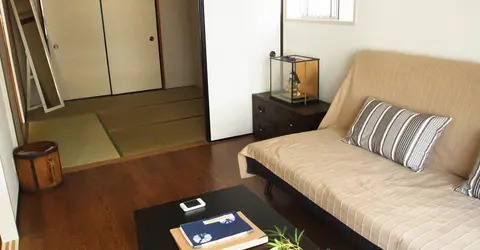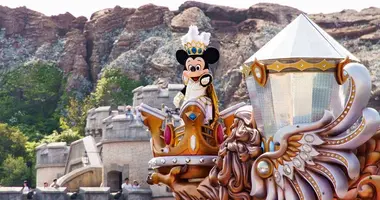Kawagoe 川越市
- Published on : 16/10/2020
- by : Japan Experience
- Youtube
Discover Japanese history through architecture, from the time of the Tokugawa shogun to warehouses from the Meiji period and the architecture of the Taisho era. Explore the streets of "Little Edo", the name given to Kawagoe, and experience Japan of yesteryear, which is only 30 minutes from Tokyo.
Kawagoe Travel Guide
Kawagoe is a historic castle town near Tokyo which retains the feel of old Japan.
Kawagoe Castle is now ruins, which can be visited, but one building, the Honmaru Goten, where the feudal lord dwelt, still remains. More than that, Kawagoe retains the two-story wooden kurazukuri architecture of its old merchant warehouses, as well as numerous temples - most notably Kita-in Temple - and shrines.
Kawagoe is also famous for elegant examples of early twentieth century brick, cement and stone architecture inspired by Taisho Romanticism. Many of the old buildings from these eras are now museums.
Kawagoe also offers plenty of opportunities for outdoor relaxation with its parkland areas of scenic beauty.
Kawagoe cuisine is famous, with its sweet potato, unagi (eel), and various Japanese confectioneries. A well-known landmark is the Bell Tower or Toki no Kane.
Things to see and do in Kawagoe
Kawagoe, became known as "little Edo" due to the wealth of its citizens, who built over 200 two-story, supposedly fire-proof, kurazukuri warehouses to store goods on their way into Edo (Tokyo) via the Kawagoe-kaido highway.
Around 30 of these ornate, earthen-walled storehouses still survive. These historic and picturesque buildings are conveniently grouped about 1km north of Kawagoe Station in an area along Chuo-dori, the town's main north-south street.
Some kurazukuri have been turned into small museums, such as the Kurazukuri Shiryokan, an old tobacco warehouse rebuilt after a devastating fire in 1893.
Opposite is the wooden bell tower, Toki-no-Kane, again dating from the 1890s, which was used to give the alarm in case of fire. Nearby are two interesting temples: Choki-in and Yoju-in.
Choki-in has a Gandhara-style statue of the fasting Buddha and a pleasant garden. Yoju-in has verdant grounds and a serene atmosphere just off the main street. The back streets near the temple are known as Kashiya Yokocho (confectioners' alley) and still house Japanese sweet shops.
Kawagoe Festival Hall (admission 500 yen) exhibits two dashi floats used in Kawagoe's October festival and shows videos of the event.
The Tendai-sect Kita-in Temple north-east of Kawagoe station dates from the 9th century and contains the only surviving structures (an annex palace; admission 400 yen) from the original Edo Castle, which were moved here along the Shingashi River and a small canal especially built to link the two cities. One of the ornately-painted chambers is believed to be the room where the third Shogun Iemitsu (1604-1651) was born. The grounds of Kita-in contain 540 statues of the disciples of Buddha (rakan) and a shrine - Toshogu - dedicated to the founder of the Tokugawa dynasty, Ieyasu.
Nearby is the Narita-san Betsu-in shrine which hosts a flea market on the 28th of each month.
Kawagoe's main matsuri, Kawagoe Matsuri, is held on the third Saturday and Sunday in October and is one of the Tokyo region's liveliest festivals with a parade of over 20 floats and costumed musicians and accompanying revelers.
Kita-in Temple celebrates a daruma matsuri in January each year. Visitors can buy one of these daruma good luck dolls to hope for a wish to come true. The temple also has a Setsubun Festival, usually in February for Chinese New Year and a cherry blossom festival in spring.
A fifteen minute walk east of the kurazukuri area are the ruins of Kawagoe Castle, now an area of park which contains the Honmaru-goten, the palace of the former feudal lords (daimyo) of Kawagoe. The large building dates from 1848 and has splendid tatami rooms and a Chinese-style tiled roof.
Kawagoe has a number of other small, interesting museums including Kawagoe City Museum, Osawa House and Kawagoe City Art Museum.
Shopping and Eating in Kawagoe
Kawagoe has a number of excellent traditional Japanese sweet shops, crafts stores for fabrics and byobu screens plus a modern shopping street just outside JR Kawagoe Station. Kashiya Yokocho (Candy Alley) has over 20 traditional stores selling Japanese confectioneries, which date from the Meiji Period of Japanese history.
Find time to eat in Kawagoe as there are some fine restaurants including Kousushi a fine sushi restaurant with over 100 years of history down a small street across from Kawagoe Festival Hall, traditional eel dishes (a specialty of Kawagoe) at Ichinoya and full course kaiseki meals at Imozen making full use of another Kawagoe favorite - sweet potato.
How to get Kawagoe:
By Train
Access to Kawagoe from Tokyo by the Tobu Line from Ikebukuro Station to Kawagoe Station or Kawagoe-shi Station, or the slower JR Saikyo Line.
Alternatively take the Seibu Shinjuku Line Koedo Limited Express train from Shinjuku to Hon-Kawagoe, which is the nearest station to the historic area.
There are also buses to Kawagoe from Narita Airport. There are 8 daily departures and the journey takes 2 hours.
By Bus
There are buses to the kurazukuri zone from both Hon-Kawagoe and Kawagoe stations. In addition there are two loop buses passing the most famous sights in Kawagoe: the retro-style Koedo Loop Bus (one-day pass 500 yen) and the Koedo Famous Spots Loop Bus (one-day pass 300 yen).
Bicycles can also be hired, inquire at the Tourist Information Office at Kawagoe Station.
































